Urban Sprawl is an issue that many recognize, even if they haven’t encountered the specific term that describes it.
It is also one that is difficult to explain, especially in regards to pinpointing causes and potential solutions.
Despite this, urban sprawl is still an issue that needs to be confronted. To do that we need to dive deeply into this issue to understand what it is and the dangers it can cause.
The aim of this piece is to help you understand urban sprawl and start this discussion while also offering potential solutions to the continued spread of urbanization.
What Is Urban Sprawl?

Urban sprawl is rapid and uncontrolled low-density development that radiates from a population center into previously undeveloped or agricultural land areas.
This expansion can lead to small suburban communities becoming urbanized over time. This creates a new center for suburban sprawl that radiates outward from these new residential areas.
Urban sprawl is now seen as an important issue in terms of its effects on public health.
Furthermore, it is also considered to be a major contributing factor to a range of environmental issues, such as climate change, waste production, habitat destruction, and air pollution.
The causes and effects of air pollution are not all human-caused, but urban sprawl and the increased transportation needs associated with it have a detrimental effect on air quality.
Define Urban Sprawl
Urban sprawl is the poorly-planned expansion of human populations away from urban centers into expanding swaths of low-density housing.
Urban sprawl is a big topic with wide-reaching ramifications on the earth and human populations.
Having a concise definition for it can help us to narrow down our discussion while pointing us in the right direction to find good solutions.
What is Urban Sprawl GSCE Geography?

URBAN SPRAWL is the uncontrolled growth of urban and suburban cities into rural or agricultural areas.
GREEN SPACE is land left untouched as urban areas expand. This protects wildlife, helps to keep temperatures lower, and aids with groundwater recovery.
REGENERATION is repurposing and revitalizing used building sites. It is more expensive in the short term but a wiser way to grow because it helps protect green spaces from development.
Thoughtful city planning directs urban sprawl in a way that helps to minimize the harm done to the earth and ecosystems.
When taking your GSCE test it’s important to keep in mind the causes and effects of urban sprawl as we’ll discuss below.
What Are the Causes of Urban Sprawl?

There is no single cause for urban sprawl. We will take a look at 10 major contributors to urban sprawl.
It is generally accepted that there are a number of contributing factors, all of which play important parts in the continued urbanization of small communities, open spaces, and green areas.
- Population growth
- Lack of affordable housing
- High real estate prices
- Rural land real estate gains
- Increasing personal income
- Rising crime in urban areas
- Large corporate office locations
- Employment opportunities become available in suburban areas
- The ownership of vehicles
- Transportation Infrastructure
A sprawl map is helpful to see areas of the country where population centers are spreading. It’s helpful to notice that these sprawling areas occur around the major metro areas.
What Are the Two Major Contributors to Sprawl?
The two largest contributors to urban sprawl are population growth and income growth. We’ll discuss these in-depth, but understand that as the population grows the economy gets stronger.
This strong economy brings economic growth to most, fueling further population growth. The strong economy also spurs increased immigration rates which also contribute to urban sprawl.
These issues are interconnected and not all of them are bad.
Americans enjoy the liberty to move to desirable communities, increase their income as much as they like through work and education, and enjoy the home and hearth surrounded by loved ones.
Not only does this wealth benefit American citizens but it helps to create a better life for immigrants who gain employment in the United States to make a better future for themselves and their families.
As we discuss the 10 causes of urban sprawl we must look at the issues from all sides, not just the ones we like to get a balanced perspective on the causes, problems, and effects of urban sprawl.
Is sprawl always bad? Not necessarily. It’s bad when it’s done thoughtlessly or haphazardly. Well-planned urban sprawl can result in a thriving yet growing city that’s expanding with smarts.
1. Urban Sprawl is Caused by Population Growth

The first thought most people have is the US birth rate when thinking of population growth. The current US birth rate is a robust 1% – an increase from 2021.
This is certainly a contributing factor to urban sprawl. A young couple may be content in a small urban apartment even with one child. However, as their family continues to grow they will look for more space.
Income also tends to rise with work and educational experience enabling the growing family to move to a more desirable home. These homes are usually found further away from the city center.
Urban Sprawl is Also Caused By Immigration
In 2022 the American foreign-born population (legal and illegal) hit 47 million people and continues to grow at a rapid pace.
- The rate of immigration to the United States (legal and illegal) is about 125,000 new residents per month since 2021.
- As of 2022 there is 1 foreign-born resident for every 7 natural-born residents of the United States.
Combine this immigration rate with the natural birth rate and you have a clear reason why there is a continual demand for more housing.
These factors don’t stand alone. As you’ll see when we dig deeper into what causes suburban sprawl, you’ll see how interconnected the causes are which makes it a particularly difficult issue to discuss or solve.
2. Urban Sprawl Is Caused By Lack of Affordable Housing

The lack of affordable urban housing forces those who need housing to look further and further away from their place of employment for a place to live.
Most metropolitan areas have very expensive housing because it is in a desirable location for work/life balance. This makes it financially inaccessible to lower-income working families and students.
There are a few ways that this seriously contributes to urban sprawl.
- Apartments and houses that are an hour or more away from industrial and urban centers are less desirable due to transit times.
- This lack of desirability makes rents and prices lower so they’re more affordable.
- The distance from work and school means that residents spend more time on the road.
- Increased time on the road means higher vehicle emissions.
- The willingness of students and employees to commute to work and school in metropolitan areas creates a real estate boom in more rural areas which increases the real estate options and prices in the area.
- These new and growing communities start by renovating old homes but eventually begin to spread into the land between the rural town and the spreading city, closing the gap with low-density housing.
The solution is to build more affordable and attractive high-density housing in metropolitan areas that can ensure the safety of residents.
Poor urban planning can also play a part in some cases as heavily-populated and poorly-planned urban areas lead to people to look for quieter places to live.
3. Urban Sprawl Is Caused By High Real Estate Prices
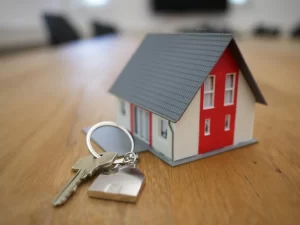
High real estate prices in desirable urban areas make it impossible for working-class families to live near work and school.
These families move further away from the city center to find affordable housing that also meets their needs for space and join the daily commute.
Major cities that can ensure the safety of urban residents enjoy very high real estate prices in urban areas.
Many times suburban residents have to commute over an hour to find housing that they can afford and that also meets their family’s needs.
What is Gentrification?
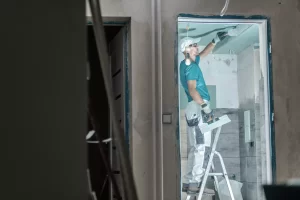
Gentrification, loosely defined, is the redevelopment of metropolitan areas that increases property values.
There is an ebb and flow in population patterns from generation to generation. A lot of it has to do with city management.
Cities that manage urban areas well enjoy the benefits of young professionals that move into urban areas to work and bring wealth to the economy.
- This movement coincides with an influx of money. This can unfairly displace marginalized communities as landlords seek to gain a bigger slice of the real estate pie by raising rents.
- Urban Growth Boundaries are meant to help cities plan for growth in a wise way, but they are often expanded in favor of tax revenue.
- As urban single-family housing gets renovated the property values rise. This is good for those who can cash in on the boom. However, it can push renters out of the community as landlords seek to cash in on the rising home values.
- The overall effect of gentrification is good for urban city dwellers as gentrification revitalizes downtown areas attracting residents and industry.
- Those who can’t afford to live in the urban center are usually forced into outlying communities with lower rents and housing prices. This is especially hard on families who can’t afford the increased cost of transportation.
Cities that allow urban areas to degrade into slums suffer as those who can afford it move into safer areas. This neglect causes businesses to close and move to more prosperous areas.
- This causes rents to fall, but so do living conditions.
- While marginalized communities may find affordable housing the living conditions can be deplorable.
- This is a huge contributing factor to suburban sprawl because rather than renovating old urban homes and buildings people choose to buy new homes in sprawling tracts within commuting distance to work and school.
- When prices are tolerable within an urban growth boundary, gentrification is more likely to occur than suburban sprawl.
- Gentrification increases property values but it also is a way to encourage sustainable development in urban areas.
This is by no means an in-depth look at the push and pull of urban sprawl and gentrification.
The goal is to show that there is more than one factor to consider when discussing gentrification. The causes and results are not one-dimensional.
There isn’t a single right answer to the needs of all people.
4. Urban Sprawl is Caused by Real Estate Gains on Rural Land
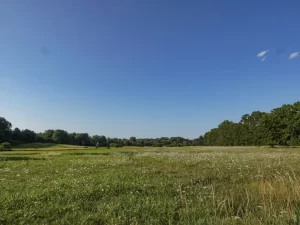
Often large tracts of rural or agricultural land within a convenient distance to urban areas are subdivided and sold to real estate developers.
As the city sprawls into agricultural areas the land value of large acreage increases by development potential.
Cities could stop this by keeping rural land zoning, but most cities choose to annex and rezone rural land to single-family or multifamily housing.
The tax incentives are very high for developing new local communities.
As ranch land and farming land is passed from generation to generation there is no guarantee that children will want to continue farming or ranching the land.
Rising real estate values increase the gains on land sold to housing developers allowing landowners to retire into suburban areas.
- There isn’t an answer to this conundrum that is fair to everyone.
- Some cities are changing all single-family residential lots to multifamily residential lots.
- This opens wide the doors to land developers who can raze a single-family home and put a highrise in its place.
- It also dramatically raises single-family housing costs overnight. A boon for those who want to sell, but it prices most families out of metropolitan areas.
- Some counties are also locking up the zoning of rural areas to force urbanization.
- These policies are unfair to those with land – not allowing them the freedom to see real estate gains.
- These policies also contribute to urban sprawl because the displaced urban population will move to neighborhoods outside of these policy zones to get the housing they need and can afford.
- Many people choose to move into sprawling areas outside of city boundaries because property taxes are much lower in unincorporated areas. This saves more money than is spent on commuting.
There is a push and pull on housing that takes place between urban and rural property prices as well with no clear-cut answer to solve the real estate crisis.
What Factors Affect Real Estate Prices?
It’s also important to keep in mind that the Federal Funds Rate has everything to do with the health of the economy.
When the Federal Funds Rate is low, money is readily available for lending at very low interest rates which fuels the rapid rise of real estate prices.
Lower rates also make better housing available to people in more varied income brackets.
When the Federal Reserve raises the lending rates it slows down the real estate market and decreases the quality of housing that people can get for the money.
This greatly impacts where people move and the demographics that settle into any given community.
5. Urban Sprawl Is Caused By Increasing personal income
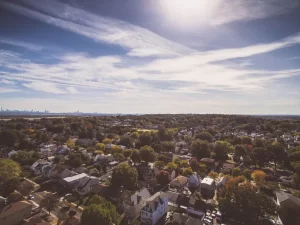
Personal income is one of the greatest determining factors for where people live, in conjunction with the Federal Funds Rate.
- When lending rates are low and wages are rising it allows people to move into more desirable areas.
- These desirable areas tend to be places where they have a little more personal space (a suburban yard), local grocery stores, and are within commuting distance to work.
- This creates a demand for smaller “bedroom” communities that serve the urban population that is migrating into areas with new housing developments.
- The only time that increased income coincides with urban living is in places where urban developments are clean, safe, spacious, and on-trend.
This growth can be curbed by inflation which causes transportation rates to rise making urban sprawl less desirable.
It also is curbed by rising lending rates which make these desirable suburban areas less affordable.
However, when urban sprawl is curbed by lending rates and inflation the population begins to turn toward urban development causing rising real estate prices there.
National housing trends tend to ebb and flow with the purchasing power of individuals and families.
6. Urban Sprawl is Caused by Rising Crime in Urban Areas

People don’t want to live where they don’t feel safe.
When crime in an urban area becomes disproportionate those who can afford to leave will leave.
They will nearly always opt for a place farther from the city center – often landing in a sprawling suburban neighborhood.
Once this shift has occurred it can take decades for the city to turn the tide and begin attracting residents and businesses back into the downtown area. Meanwhile, rents are low and housing prices are low.
This makes living affordable but if families aren’t safe living there they will financially stretch to live in the safest area they can afford.
7. Urban Sprawl is Caused by Corporate Office Locations
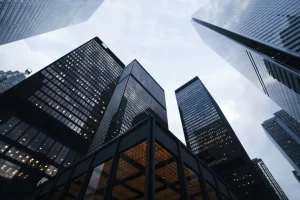
Usually, large corporate offices are located in established metropolitan areas. Those who need to work in the office building must live within commuting distance.
If the neighborhoods around the office building are busy, unsafe, or full, employees will seek housing further away from the urban center.
- Interestingly, 2020 saw nearly everyone working from home – a welcome change for many.
- Telecommuting increased urban sprawl quickly and dramatically because employees were able to get away from the urban space restrictions and still maintain their income.
- Much of the urban sprawl was fueled by conjectures that companies would keep remote working conditions permanently.
- With most corporations now requiring in-person workdays, this has increased the carbon emissions of those who moved away from the city but now must commute in for work.
Time will tell how this plays out because the lending rate is going up steadily which is slowing down the housing market in many bedroom communities that cashed in on work-from-home.
8. Urban Sprawl is Caused by Employment in Suburban Areas
Urban sprawl brings with it economic growth. Sometimes small towns are revitalized as they are annexed into the commuting strategies of local residents.
In many cases, a land developer will buy a massive tract of land and make a planned community that includes housing, convenience stores, grocery stores, furniture and home good stores, and restaurants.
These small communities have everything that residents need to stay out of the city when they don’t need to be at work.
While these small communities contribute to urban sprawl, they also help to decrease carbon emissions from the residents by not requiring them to commute back and forth from the city for what they need.
It also brings more employment opportunities and can even attract new businesses that can employ members of the community and further limit commuting.
While some see suburban employment opportunities as a negative because it draws people out of urban development areas and into the sprawl, it also helps those in the sprawl avoid commuting as much.
Well-planned communities can be friendly to walking and bicycling which also helps reduce the carbon emissions that are connected with urban sprawl.
New community planning strategies focus on limiting concrete, maximizing walking and biking scores, and ensuring high percentages of green space and open space.
9. Urban Sprawl is Caused by Ownership of Vehicles

Since the end of World War II vehicle ownership has become a given for nearly everyone. We love having the liberty to go where we want when we want.
Vehicular ownership enables urban sprawl, but it isn’t necessarily a bad thing. Let’s explore the various facets of personal vehicle ownership from both sides of the issue.
- Those who own a vehicle can use it to commute in from a community that is far away from work. This increases their carbon footprint significantly.
- Those without a vehicle will walk, bicycle, or use public transportation which dramatically decreases their carbon footprint.
- Those who own a vehicle have the personal freedom to seek better employment.
- Those without vehicles are very limited by their transportation options making them economically vulnerable.
- Those without vehicles often must do work that they don’t like for pay that is less than they deserve because they can’t drive to better employment.
- Those with vehicles are not bound to live in an unsafe or undesirable community.
- Those without vehicles are often left in communities that are unsafe or left in decrepit housing because they can’t drive between their job and a better housing situation. This leaves them vulnerable to housing and work downturns.
So yes, personal vehicle ownership increases carbon output and encourages urban sprawl, but it is also a safety mechanism for individuals and communities alike.
Those without transportation tend to be the most vulnerable to undesirable work, school, and living situations.
10. Urban Sprawl is Caused by Transportation Infrastructure
Urban sprawl also has a push-and-pull relationship with transportation infrastructure.
- Good highway systems make it quicker, easier, and safer to travel from place to place.
- Good highway systems also make it quicker and easier to travel between a bedroom community and an urban center for work.
- However, it is the urban sprawl that makes better highways necessary. As people move away from urban centers the old roads are no longer sufficient for the quantity of traffic.
- A good example of this is Los Angeles which suffers from a continuous cycle of stressed highways combined with a mobile population.
Many communities are served by good commuter rail lines, light rail, trams, and buses. It is wise for cities to keep these mass transit systems safe and affordable.
The more people use mass transit the less congestion there is on the roads and the less carbon emissions from personal vehicles.
Areas that are not served by mass transit are wise to keep roads in good repair and provide highways that allow for quick commutes.
The longer a car idles in traffic the more carbon dioxide, carbon monoxide, and other greenhouse gases are emitted from the idling tailpipes. It’s best to let people get where they’re going faster.
On the flip side, making it easier to commute makes urban sprawl more attractive to those who are tired of living in urban areas.
There is certainly a give and take when discussing the pros and cons of having a commuting population.
5 Examples of Urban Sprawl
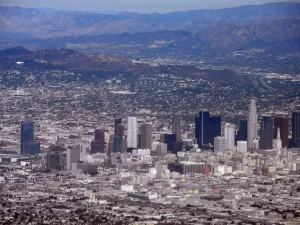
Some of the most sprawling major cities in the United States are almost iconic for the vast developments of tract housing.
- Atlanta, Georgia – Roughly 500,000 people spread across 134 miles of suburbia.
- Phoenix, Arizona – 1.5 million people spread across 517 square miles.
- Los Angeles County, California – 10 million people in 4,058 miles. However, in the Los Angeles area the urban sprawl has resulted in cities and counties that are so closely populated that there is no border or distinction. It has also gained more population density thanks to more sustainable urban development.
- Houston, Texas – 2,300,000 people spread over 665 miles. Interestingly, although cities in Texas definitely sprawl, they are also gaining population density in metro areas – a net reduction in sprawl.
- Chicago, Illinois – 2.7 million people in 234 square miles. That isn’t a bad population density, but it doesn’t account for people leaving Chicago for sprawling suburbs that are not within the city limits. Sprawl near Chicago is huge and growing.
Urban sprawl happens in small, medium, and major cities as people seek better living situations for themselves.
However, it’s interesting to note that there is a distinct increase in urban density in certain cities that are encouraging this trend.
What Are the Effects of Urban Sprawl?
Urban sprawl looks like quiet communities springing up in outlying areas. Urban sprawl can be almost invisible in heavily forested areas.
Urban sprawl has significant impacts on human beings, the land, and native species. Let’s take a look at the effects of urban sprawl.
Effects of Urban Sprawl on Natural Habitats

The major problem created by urban sprawl is the loss of natural habitats for various species of wildlife.
As more land is consumed by urbanization, animal species are forced out and may become endangered.
More cities are dedicating open space and nature preserves to help wildlife, but the encroachment damages huge swaths of natural wildlife habitat that can’t be reclaimed.
Effects of Urban Sprawl on the Environment
As we discussed earlier, increasing sprawl means more time that people spend in cars. This increases the output of greenhouse gases and carbon footprint per resident.
The environmental problems created by land consumption for sprawling suburbs are far-reaching.
Sprawling development raises the heat index of urban and suburban areas because of the heat reflection and retention of asphalt and concrete.
Cities can help by increasing green spaces, but in areas that suffer from drought these green spaces can’t be maintained.
Effects of Urban Sprawl on Economics
Economically speaking, urban sprawl can be good. The more that people invest in housing, cars, energy, and other luxuries the more money goes around.
Urban sprawl also creates a need for grocery stores, restaurants, fast food chains, home furniture stores, decor stores, sporting goods stores, gyms and recreational centers, schools, etc.
It’s a matter of where the money goes. As money shifts into suburban areas the urban areas suffer from the loss of income.
Effects of Urban Sprawl on Water Consumption
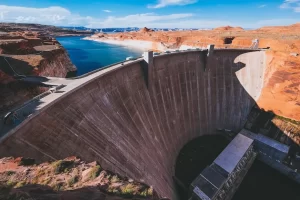
Urban sprawl has a massive impact on water consumption. In urban areas, there is less green space and less water consumption.
Suburban residents enjoy many lawns, parks, and city strips. These require water to stay green – a requirement that is not present when the land is undeveloped.
This is a huge problem for cities like Las Vegas that have sprawled across the desert relying on a recently developed water source that is quickly drying up.
Effects of Urban Sprawl on Human Health

The effects of urban sprawl on human health are concerning.
- The increased emissions pollute the air we breathe, making us more vulnerable to respiratory problems and the effects of carcinogens.
- Time spent commuting in vehicles increases general obesity rates.
- Time spent commuting also means that people eat less healthy food and more fast food – detrimental to overall health.
However, as hospitals and medical clinics also move into sprawling areas people tend to have better access to a wider variety of health services in their local area.
In general, people trapped in the maze of urban sprawl get less exercise overall. Planned communities with good sidewalks and nice parks encourage people to get out and stay fit.
Walkable communities result in lower air pollution and greater population health.
Effects of Urban Sprawl on Relationships
As people move farther from each other they tend to have fewer meaningful relationships. However, urban sprawl is not solely to blame for this.
As we know, ready entertainment and digital relationships have largely replaced interpersonal, live communications between people. This is a larger issue than can be blamed on urban sprawl.
However, an hour commute to a favorite restaurant with friends can be a significant deterrent to quality time spent with special people.
Urban Sprawl Solutions
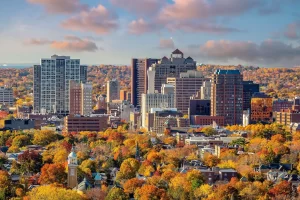
One of the major issues with urban sprawl is that it is difficult to find possible solutions to the problem.
A growing population needs housing, and forcing an increase of urban density creates a separate set of problems including housing prices, crime rates, trash and sewer services, and transportation overload.
However, there are organizations that are dedicated to trying to solve the issue that have come up with a number of potential solutions.
- Repurpose old urban buildings into new multifamily housing units. Everything from old factories to government buildings can be converted into comfortable housing.
- Focus on community spirit. Give residents a reason to be proud of their city and they’ll visit and move to downtown corridors more often.
- Transform some old urban areas into beautiful urban refuges. Not everything has to be concrete. Green spaces are relaxing and peaceful – and they encourage people to move into urban areas.
- Ensure the safety of residents. This is a hotly debated topic, but the fact is that when residents don’t feel safe, they leave urban areas to decay. Ensuring public safety is a prime responsibility of local governments – however they choose to do so.
- Encourage community involvement. City beautification, city gardening, and combating litter and graffiti can make a drastic difference in the demographic and density of urban areas.
Unfortunately, while all of these are nice ideas that really will work, they have to confront the practical issues and city mistakes that lead to urban sprawl in the first place.
FAQs
Q: How Does Urban Sprawl Affect Climate Change?
A: It affects it negatively. Urban sprawl increases atmospheric temperatures and greatly increases greenhouse gas emissions.
Q: Why Is It Difficult To Control Urban Sprawl?
A: It’s difficult to control urban sprawl because there are usually urban problems that create a desire for residents to leave urban areas and seek refuge further from the city.
Once these problems take root in a city they can’t be changed overnight. It takes wise city policies and careful urban planning to make the downtown core attractive for residential and commercial use.
Q: What Is Smart Growth?
A: Smart growth is a movement that seeks to help community leaders plan urban and suburban areas smarter. From safer sidewalks to improving walk scores, it’s a movement to make urban living smarter and safer.
Q: Why Is Smart Growth Better Than Urban Sprawl?
A: Smart growth seeks to make life better in areas with high population density so they’re more attractive for residential use.
Urban sprawl is desirable for many reasons, but it takes a huge toll on the environment, wildlife, and human health.
By making local communities smarter instead of larger these problems can be mitigated over time.
Final Thoughts
As with many environmental issues, urban sprawl is a complex problem that doesn’t have an easy solution.
The demands of a growing population, coupled with advances in technology, make it easier for urban areas to spread out into the countryside and natural habitats.
Simply opposing urban sprawl isn’t effective. There has to be an incentive for the population to choose to live in urban areas.
What do you think of urban sprawl? Do you have ideas to combat urban sprawl or make it less disruptive to the environment? We’d love to know your thoughts. Chime in the comments below!
